
My husband laughs about how much research I do to prepare for these Sundays With Writers interviews, but I love researching about the people behind the books just as much as I love the books themselves. Today’s guest, Erika Swyler, is an author that I have found completely fascinating as I have read more about her. She wrote a beautiful book called The Book of Speculation and instead of going about the whole writing process the traditional way at a computer, she did it longhand. Instead of sending files to land an editor, she decided to try binding books herself to catch an editor’s eye.
It’s because of her unique methods that I wanted to feature her today in our interview series. I can’t wait for you to read this book and this interview with Erika!
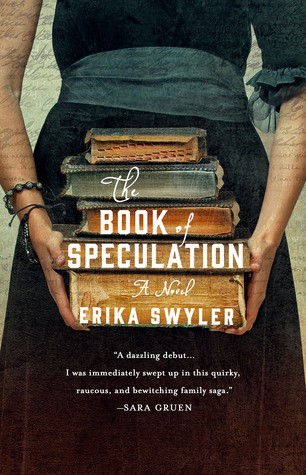
I knew I was going to love The Book of Speculation because it had so many ingredients in it for success with me- librarians, old books, a bit of magic, and a glimpse at the old carnival life. The book has been compared to Water For Elephants and Night Circus, but definitely stands on its own and is an ambitious debut novel from this first-time author.
When Simon, a young librarian, receives the gift of a book that is a travel log for a carnival in the 1700’s, he discovers a drowning death of a circus mermaid that is coincidental to his own mother’s drowning death (a former circus mermaid herself) that happened even on the same day. If their family is cursed, his sister could be the next victim and he will do anything to save her. The chapters alternate between the travel log (complete with unique sketch drawings) and present day as Simon tries to stop the curse on his family. The author manages to bring these stories together in a beautiful way with a satisfying conclusion to these mysterious drownings.
You can read my full review of this book here as well as a few other great must-reads for the month of April!
Grab your cup of coffee and let’s settle in with Erika Swyler today and learn more about her debut novel!
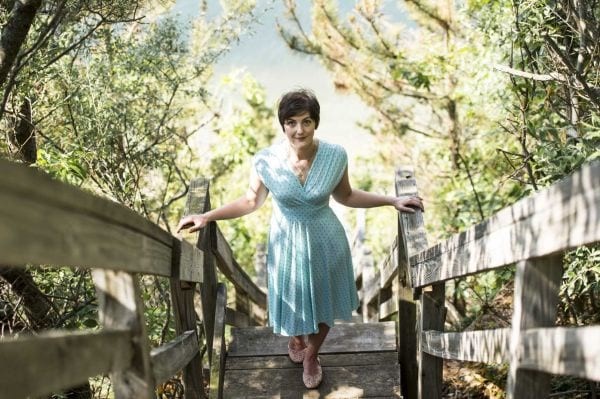
I can admit, I am a bit of a nut about books and movies that have to do with the circus. I understand that you lived at the library for months researching the history of circuses in America to write The Book of Speculation. What is it about the circus life that fascinates you and what is the most surprising discovery you made while doing your research?
Circus life fascinates me because it’s so much about people finding and building family. Shows are living, breathing things with all these fascinating interpersonal dynamics. The life seems so rootless, yet these intense bonds form between people in shows. When you look at circuses and carnivals closely they make you question your ideas about what a home and family are.
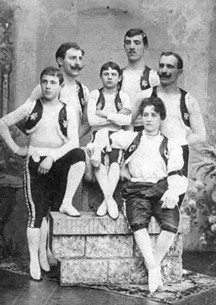
It was surprising to discover how far back some families can trace their history with the circus. The Wallendas were already established and touring in the 1780s. That’s insane. They’ve been practicing circus arts for essentially half of circus’s history. That’s a bigger footprint than P.T. Barnum.
Your book has a lot of unique elements in it, but one of them that really stood out to me was the use of illustration in your story. Did this add more pressure to you to create these and how do you think it makes your book more interactive for your reader?
Illustrating added pressure, but it also offered me far more control than most novelists have their first time out, and it kept me mercifully busy. When most people are sweating and waiting for edits, I was up to my ears in charcoal and graphite. That was a very good thing. I had total freedom as to what the illustrations were, and that let me build on aspect of a characters I wouldn’t have been able to otherwise. My circus master, Peabody, sketches in his journal. Actually showing the reader the illustrations says so much about him, his journal, and the plot. Illustration lets readers look at the exact images the characters in the book are seeing. That’s smashing a wall. You’re looking at the drawings, you’re in the book.
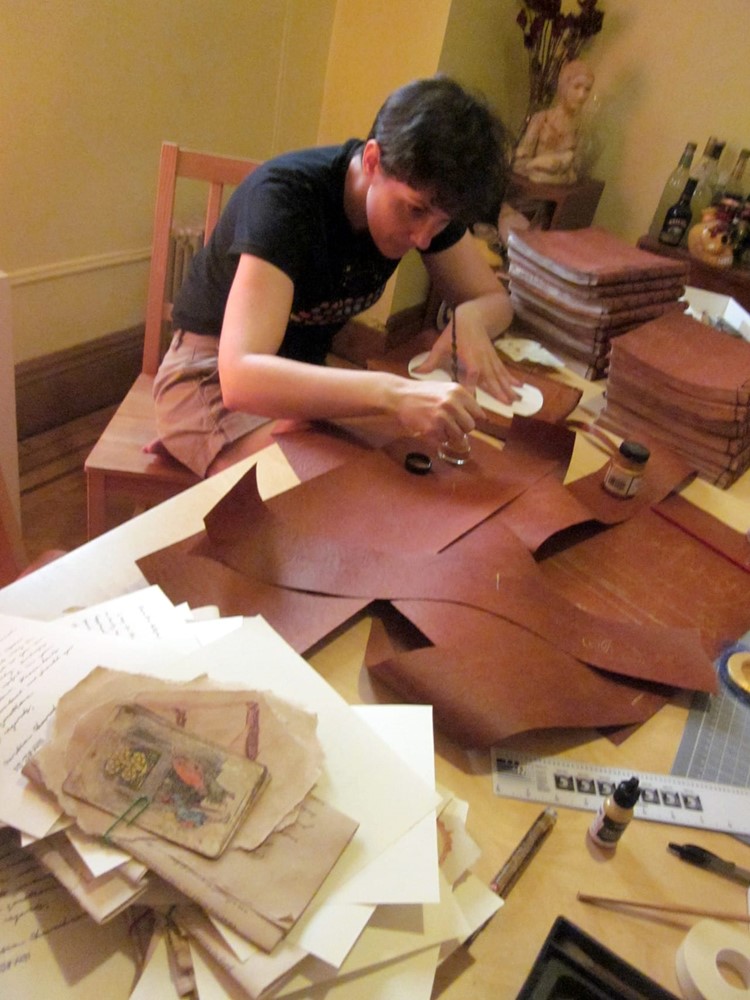
I think the most surprising thing I discovered about you while researching for this interview is that I read that when you prepared your manuscripts of this book to send out to various publishers that you hand bound and tea-stained each of the copies to give them the feel of an old book, similar to the one that Simon receives in the beginning of this novel. Do you think that the work you did to create a unique reader experience for them ultimately helped you land your book deal?
Binding the manuscript put the story on the outside. It’s rare to see a book look exactly like what’s in it. I had an inkling that whoever connected with the manuscript as art would connect with the story, because it is about old books, bibliophiles, and beautiful objects. I also suspected that I was selling myself based on my ability to work hard. Making books like that is a huge time investment. I wanted people to know that I was willing to break my back to make this book happen. Ultimately, that came across. Once the manuscripts were out, things moved quickly. And I found my dream editor.
I understand you are now an expert in Japanese Stab Binding. For those of us reading our pathetic e-books, what is this binding process and why did you chose it for your manuscripts?
I’m more a jack-of-all-trades than an expert, but I’ve gotten pretty good with this type of binding. Japanese Stab Binding is a method where you sew through an entire block of paper rather than stitching together folded signatures. Each stitch goes through both covers and the pages. The stitches are visible, and the thread can be used to make decorative patterns. It’s used a lot in photo albums, for binding loose pages, and for quick and dirty paperback repair.
Stab binding made sense for the manuscripts because it’s relatively cheap, fast when compared to other techniques, and it’s visually striking. Being able to sew loose pages meant I was able to work with standard copy paper and splurge on covers rather than losing money on typesetting and printing. It’s also a very human stitch. When you see a book with a stab binding, you get a sense of how it’s done and that you understand it. It’s a binding that feels like history.
I often feel like I was born in the wrong era and it seems that might be something you and I have in common! I read you do your first drafts in longhand and on your collection of vintage typewriters. Do you have a favorite typewriter in your collection and why do you love these retro methods of book writing so much?
I write a lot longhand and on typewriters because it keeps me from editing. Computers have given us this terrible habit of writing a word then deleting it over and over again. You don’t do that longhand. I also find that characters and scenes demand different voices. Writing by hand feels very different than using a typewriter, which is a universe away from writing a laptop. Some characters want the typewriter. Sometimes if I’m really flying I switch around between hand, typewriter, and computer.
I do hoard typewriters. The oldest I have is an Underwood Champion from the late ’30s, but my favorite is a 1958 Hermes 3000. It’s mint green and fabulous. The keys feel right, it has great control over margins and spacing, and I can really move on it. It’s a beautiful machine. My husband got it for me. He supports what I do in a very deep way. He can’t write the words, but he makes sure I have the tools to write them.
There have been comparisons to The Night Circus and Water for Elephants with this book. In what ways do you think your book is different from these and why do you think there is such a fascination with the circus life in literature?
So those comparisons are huge and humbling. But there are some major differences. First, the fantastic element. Water for Elephants has both feet in a lush reality. The Night Circus floats in the fantastic. The Book of Speculation dances in between. I love the idea of everyday lives being infused with elements of wonder. I’m essentially mythologizing the ordinary—that’s the oldest trick in storytelling, but one that’s often overlooked. Then there’s scope. The Night Circus and Water for Elephants both span a lifetime (albeit magically enhanced in some instances). I went big and set my scope as 250 years of a family’s history. It asks readers to look for overlaps and intertwining stories. Essentially, I got to write historical fiction, fantasy, magical realism, mystery, a family saga, and literary fiction all at once.
Circus demands that you gawk, while also maintaining an intense wall of privacy. It’s impossible to watch a circus performance without wondering about artists and what their lives are like. Acts are billed as “the best” or “the only.” It’s the nature of writers to need to know what “the best” is like without makeup and lights. Combine that with a secretive culture and you might as well just wave a red flag at us.
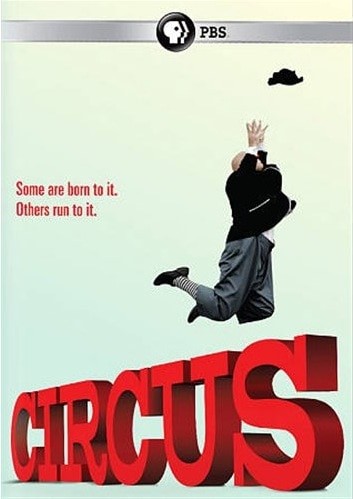
Do you have any books on the circus or documentaries that you could recommend for people who want to learn more about the circus life?
There’s a wealth of information out there. The Circus Age: Culture and Society under the American Big Top by Janet M. Davis is pretty fantastic. For that specific carnival cadence, Howard Bone’s Side Show: My Life with Geeks, Freaks and Vagabonds in the Carny Trade is about as atmospheric as it gets while revealing surprisingly little. That perfectly captures the “insiders only” feel of carnivals and circus. PBS also made a six-episode series, Circus, which is incredible. As far as access to modern circus life, it’s unbeatable.
If you could tell anyone to read one book (other than your own) what would that book be (we will add it to our list of recommended reads for our readers!)?
Geek Love by Katherine Dunn. I suggest people read it because it may freak them out. It’s also what fearless narration looks like. It’s bold and bizarre in all the right ways and full of incredible visual writing. It’s a book that stays with you long after you’ve finished. It’s the book I dream about writing.
You can connect with Erika Swyler on GoodReads or through her website! I’m always thankful for these moments with writers and I hope you will pick up this amazing book! You can always connect with me on GoodReads,through our books section of our site, and you can read our entire Sundays With Writers series for more author profiles. Happy reading, friends!
*This post contains affiliate links!